Understanding Optical Sensors: Types, Principles, and Applications
2024-05-24
9166
Catalog

Figure 1: Optical Sensor
What Is an Optical Sensor?
The Optical Sensor design is based on the Wheatstone bridge circuit. In electrical engineering, a Wheatstone bridge uses a combination of known and unknown resistors to determine the value of the unknown resistor by comparing the voltage. Likewise, light bridge sensors use a bridge structure with four photodetectors to detect changes in beam position.
First, the operator adjusts the position of the detectors to ensure that the beam hits all four detectors evenly. When the beam is deflected, each detector captures a different intensity of light. The circuitry then processes these signals to determine the exact position and offset of the beam.

Figure 2: Optical Sensor
For example, if the beam moves to the right, the right detector receives more light and the left detector receives less light. The circuit's signal processor quickly recognizes and calculates this change, outputting accurate position data. The process is fast and highly accurate, making Optical Sensors important in automated equipment and high-precision positioning systems.
Working Principle of Optical Sensor
Optical sensors detect the location or presence of objects by emitting light and capturing reflections or interruptions of these rays. The sensor uses light-emitting diodes (LEDs) to emit a beam of light. When this beam encounters an object, it can be reflected to the sensor or blocked by the object.

Figure 3: Working Principle of Optical Sensor
On an automated assembly line, operators adjust the position and sensitivity of sensors based on the characteristics of the object, such as material, size, and expected location. The sensor's ability to detect objects is independent of the material, whether wood, metal, or plastic, making it ideal for multi-material production environments.
For example, detecting clear glass bottles requires adjusting the sensor to recognize transparent materials. Transparent objects do not reflect light efficiently, so the sensor requires higher sensitivity or a special light source (such as infrared).
As part of its design, the sensor evaluates reflected or interrupted light beams. When an object blocks the beam, the sensor immediately sends a signal to the control system indicating the object's location or passage. If the light is reflected, the sensor uses the intensity and angle of the reflection to determine characteristics of the object, such as size and surface material.
Types of Optical Sensors
There are many types of optical sensors, each with specific operating principles and applications. The following are some common optical sensor types used in real-world scenarios.
Photoconductive devices change the conductivity of materials based on light intensity. When light strikes the sensor, electrons in the material absorb the light energy and jump to the conduction band, increasing the material's conductivity. Photoconductive devices are used in light-intensity detection systems, such as automatic dimming lamps. Operators need to consider ambient light conditions and response times to ensure precise control when adjusting these devices.
Photovoltaic cells (solar cells) convert light energy directly into electrical energy through the photoelectric effect in semiconductor materials. Photons excite electrons from the valence band to the conduction band, creating electron-hole pairs and generating electric current. These batteries are widely used for energy production and powering remote devices such as satellites and outdoor surveillance cameras.

Figure 4: Photovoltaic Cells
Photodiodes use the photoelectric effect to convert light into electrical current. When light hits the activation area, their internal structure can respond quickly and generate an electrical current. These sensors are commonly used in light pulse detection and communication equipment such as remote controls and fiber optic systems.

Figure 5: Photodiodes
Phototransistors are essentially photodiodes with internal gain. When light strikes the base-collector junction, an internally amplified current is generated, making it suitable for detecting weak light signals. These sensors are particularly useful in applications that require high sensitivity, such as optical measurement equipment in laboratories.

Figure 6: Phototransistors
Reflective Sensor
Reflective sensors combine a transmitter and receiver in a single device, allowing the emitted beam to be reflected to the receiver through a reflective surface or object surface. When an object enters the path of the beam, it interrupts the light, triggering the sensor.
To set up the sensor, it needs to be positioned and tilted correctly for optimal reflection. The operator must adjust the position of the sensor to ensure that the reflective surface is large enough and properly aligned to effectively reflect the beam to the receiver.
For example, in automated packaging lines, reflective sensors detect products moving on a conveyor belt. The operator places the sensor on one side of the conveyor belt and the smooth reflector on the other side. When a product passes through and blocks the beam, the sensor detects the interruption and sends a signal to trigger actions such as stopping the conveyor or transferring the product.
One of the advantages of reflective sensors is their ability to operate over long distances and their tolerance to a wide range of surface properties. As long as enough light is reflected, they can detect objects regardless of color or surface texture. This versatility makes reflective sensors ideal for industrial automation, robot navigation, and item classification tasks.
Through-Beam Sensor
A through-beam sensor consists of two main components: a transmitter and a receiver, placed opposite each other, usually at a distance. The transmitter continuously sends a beam of light to the receiver. When an object blocks this beam, a receiver detects the occlusion and converts it into an electronic signal, which triggers a switching operation.
To set up the sensor, the transmitter and receiver need to be precisely aligned. This involves adjusting their position and angle so that the beam from the transmitter hits the receiver directly. Operators must consider environmental factors such as background light and potential sources of interference to avoid false triggering.

Figure 7: Through-Beam Sensor
For example, at the entrance to a large warehouse, through-beam sensors monitor for unauthorized entry. The transmitter and receiver are placed on both sides of the door. When someone or an object passes through the door, the beam is interrupted and the system triggers an alarm.
One of the great advantages of through-beam sensors is their ability to operate over long distances, making them ideal for monitoring large areas. Detection is based on beam interruption, so the sensor is not sensitive to the size, color, or surface structure of the object. However, the object must be large enough to completely cover the optical path between the transmitter and receiver.
Through-beam sensors are widely used in industrial automation and security systems, especially in environments where long-distance monitoring and high reliability are required. They are ideal for detecting items on production lines and tracking high-speed moving objects. By understanding these operational details, operators can ensure efficient and reliable use of through-beam sensors in a variety of applications.
Diffuse Reflection Sensor
Diffuse reflectance sensors combine transmitter and receiver in one device. It works by emitting light and receiving light scattered back from the object being measured. The sensor is particularly useful for detecting objects with complex surfaces or shapes, such as fabric, wood, or irregularly shaped metal.
First, set the sensor's sensitivity to match the reflective properties of different materials and colors. Operators need to adjust the equipment based on the object's specific reflectivity. This ensures that the reflected light is sufficient for the receiver to capture, avoiding false readings due to too strong or too weak light.

Figure 8: Diffuse Reflection Sensor
For example, in automated packaging systems, diffuse reflectance sensors detect labels on packaging boxes. The operator adjusts the sensor so that the machine accurately identifies each box, even if the labels have different reflectivities. This requires precise control of the intensity of the emitted light and the sensitivity of the receiver.
Diffuse sensors can experience problems due to uneven light scattering, especially when the light reflected from the back of an object is more concentrated than the light reflected from the front. To solve this problem, the sensor is designed using multi-point detection technology to reduce errors. Operators must consider these factors and experimentally determine the optimal sensitivity and emission angle to ensure accurate and reliable detection.
Regular maintenance and calibration ensure long-term stable operation. This includes cleaning the sensor lens to prevent dust and impurities from interfering with light transmission.
Different Light Sources for Optical Sensors
The light source is very important to the design and functionality of optical sensors. Modern optical sensors typically use a monochromatic light source, which provides stable, consistent light, enabling high-precision measurements and optical communications.
Lasers produce highly coherent beams of light by exciting atoms in a specific medium, such as a gas, a crystal, or a special glass. The beam produced by the laser is very focused and can be transmitted over long distances without significant spreading. This makes them ideal for applications requiring precise positioning and long-distance communications, such as fiber optic communications and precision measurement equipment. In operation, lasers require precise power management and environmental control to maintain stable output. Due to the potential hazards of high-intensity lasers, operators must ensure safe laser management.
LEDs (Light Emitting Diodes) are valued for their small size, high efficiency, and long life. They emit light by the recombination of electrons and holes in a semiconductor material (usually n- and p-type doped regions). LEDs can cover a wide range of wavelengths from infrared to ultraviolet. The incoherent light of LEDs is suitable for a variety of lighting and indication applications, such as traffic lights and smart lighting systems. Deploying LEDs is relatively simple and does not require complex safety measures such as lasers. However, ensuring the consistency and durability of LED light sources requires precise current control.
Both light sources have their advantages and disadvantages. The choice depends on specific application requirements. Lasers are commonly used in precision optical experiments and high-speed optical communications, while LEDs are more commonly used in consumer electronics and marking systems.
Liquid Level Indicator Based on Optical Sensor
A liquid level indicator based on an optical sensor is a precision measurement tool that uses the principles of refraction and reflection of light to detect changes in the liquid level. It consists of three main components: an infrared LED, a phototransistor, and a transparent prism tip.

Figure 9: Optical Level Sensor
When the prism tip is exposed to air, the light from the infrared LED undergoes total internal reflection within the prism, reflecting most of the light to the phototransistor. In this state, the transistor receives more light and outputs a higher signal.
When the prism tip is immersed in a liquid, the difference in refractive index between the liquid and air causes some light to escape the prism. This causes less light to reach the phototransistor, thereby reducing the light it receives and lowering the output signal.
Installation and debugging steps:
Make sure it is clean: The prism tip must be clean and free of contamination to prevent inaccurate readings. Any dirt or residue will affect light reflection.
Position the sensor: Correctly align the sensor's prism tip with the expected range of fluid level changes. Adjust the position of the sensor so that it accurately detects the rise and fall of the liquid level.
This level indicator is effective regardless of the color or clarity of the liquid. It works reliably in a variety of liquid media, including turbid or colored liquids. Optical sensors provide a non-contact method of liquid level measurement, reducing the risk of sensor wear and contamination, and thereby extending equipment life.
Application of Optical Sensors
Optical sensors are used in many fields due to their high sensitivity and accuracy. Below is an introduction to some key application areas.
Computers and office automation equipment: In computers and copiers, optical sensors control paper position and movement. These sensors ensure correct paper advance and ejection during printing, reducing jams and errors. They are also used in automated lighting fixtures, such as sensor lights in hallways or conference rooms, which detect people and automatically turn lights on and off, saving energy and increasing convenience.
Security and Surveillance Systems: In security systems, optical sensors are widely used for intrusion detection. They detect when a window or door is opened and trigger an alarm. In photography, optical sensors in flash synchronizers ensure that the flash fires at the optimal moment for optimal lighting effects.
Biomedical applications: In the medical field, optical sensors monitor a patient's breathing and heart rate. By analyzing changes in reflected light, they detect tiny chest movements to non-invasively monitor respiratory rate. Optical heart rate monitors use LEDs to emit light through the skin and detect the amount absorbed and reflected by the blood to calculate heart rate.
Ambient light sensor: In smartphones and tablets, ambient light sensors automatically adjust screen brightness to optimize the display based on surrounding light conditions and save battery energy. These sensors require precise calibration and sensitive response characteristics to adapt to rapidly changing ambient light conditions and provide users with a comfortable visual experience.
Conclusion
Applications of optical sensors in various technological fields demonstrate their broad functionality and efficient performance. From Optical Sensors to various reflective and through-beam sensors, each type of optical sensor has unique advantages and can meet different inspection needs. In industrial automation, they provide high-precision detection and control; in consumer electronics, they improve the intelligence of equipment; in biomedicine and environmental monitoring, they ensure the accuracy and reliability of data. In the future, with the continuous advancement and innovation of technology, optical sensors will play a more important role in more emerging fields and promote the development of various industries in the direction of intelligence and automation.
Frequently Asked Questions [FAQ]
1. Is an optical sensor analog or digital?
Optical sensors can be analog or digital, depending on their design and the type of output signal. Analog optical sensors output a continuously varying voltage signal that is proportional to the detected light intensity. Digital optical sensors output digital signals, such as binary codes, which are usually converted from analog signals through a built-in analog-to-digital converter.
2. What are the advantages of an optical sensor?
The main advantages of optical sensors include:
High sensitivity and accuracy: able to detect weak light signals and subtle object changes.
Non-contact measurement: Measurement can be carried out without contact or interference with the target, suitable for the detection of fragile or dangerous substances.
Fast response time: able to quickly respond to optical changes in the environment, suitable for dynamic measurements.
Wide adaptability: Can work in a variety of environmental conditions, including harsh or hazardous environments.
3. How to test an optical sensor?
Testing optical sensors typically involves the following steps:
Prepare the test environment: Ensure that ambient light conditions meet the sensor's operating specifications.
Connect the device: Connect the sensor to a reading device, such as a multimeter or computer.
Calibration: Calibrate the sensor according to the manufacturer's instructions to ensure accuracy.
Apply a test light source: Use a light source of known brightness to illuminate the sensor.
Read and record output: Record the sensor's output and check that it reacts as expected to changes in the light source.
4. What is the difference between an optical sensor and an infrared sensor?
The main difference between optical and infrared sensors is the range of light wavelengths they detect. Optical sensors generally refer to sensors capable of sensing wavelengths in the visible range. Infrared sensors specifically detect infrared light wavelengths, which are invisible to the human eye. Infrared sensors are commonly used in thermal imaging cameras, night vision equipment, and some types of communications equipment.
5. Are optical sensors passive or active?
Optical sensors can be either passive or active, depending on whether they require an external light source.
Passive optical sensors: No additional light source is required, they work by detecting light from the environment, such as sunlight or existing lighting.
Active optical sensors: require an external light source to illuminate the target and then detect the light reflected or transmitted from the target.
 ABOUT US
Customer satisfaction every time. Mutual trust and common interests.
ABOUT US
Customer satisfaction every time. Mutual trust and common interests.
function test. The highest cost-effective products and the best service is our eternal commitment.
Hot Article
- Are CR2032 and CR2016 Interchangeable
- MOSFET: Definition, Working Principle and Selection
- Relay Installation and Testing, Interpretation of Relay Wiring Diagrams
- CR2016 vs. CR2032 What’s the difference
- NPN vs. PNP: What's the Difference?
- esp32 vs stm32: which microcontroller is better for you?
- LM358 Dual Operational Amplifier Comprehensive Guide: Pinouts, Circuit Diagrams, Equivalents, Useful Examples
- CR2032 VS DL2032 VS CR2025 Comparison Guide
- Understanding the Differences ESP32 and ESP32-S3 Technical and Performance Analysis
- Detailed Analysis of RC Series Circuit
 The Ultimate Guide to Soldering: Tools, Techniques, and Safety Tips
The Ultimate Guide to Soldering: Tools, Techniques, and Safety Tips
2024-05-27
 A Comprehensive Guide to Fuses and Their Functions
A Comprehensive Guide to Fuses and Their Functions
2024-05-24
Hot Part Number
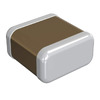 GRM0335C1H360GA01D
GRM0335C1H360GA01D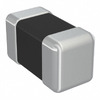 JMK063BJ104KP-F
JMK063BJ104KP-F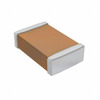 CL05C130JB5NNNC
CL05C130JB5NNNC C2012C0G2W181K060AA
C2012C0G2W181K060AA C4520CH3F120K085KA
C4520CH3F120K085KA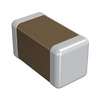 GRM1555C1H5R6DA01J
GRM1555C1H5R6DA01J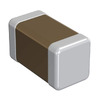 GJM0225C1E180JB01L
GJM0225C1E180JB01L CL21X106KQQNNNG
CL21X106KQQNNNG GRM31AR72J152KW01D
GRM31AR72J152KW01D LLA31MR71A225MA01L
LLA31MR71A225MA01L
- GRM1555C1E5R5CZ01D
- CL31A106KQCLNNC
- VS-12CWQ06FN-M3
- VS-30CPH03-N3
- IRF7701TRPBF
- VE-234-EU
- IR35204MTRPBF
- SKM800GB128D
- VI-B01-04
- 5943001001
- DS92LV2422SQE/NOPB
- R5F100LHDFB#V0
- OPA170AIDBVR
- 2N2907
- 1SMB5949BT3G
- AD7512DITQ/883B
- AD9352BCPZ-REEL
- DSS9NC51H223Q55B
- EDB4032B2PB-8D-F
- ICS9LP505-2HGLFT
- LM5642MH
- LTC1735EGN
- MT46H8M16LFCF-75IT:B
- MT48LC4M16A2TA-6
- NT68667HFG/BAB
- UDA1331H/N1
- 1AB43163AAAA
- LGE2111C-MS
- MK1444-04S
- CLX-020793-300
- PCI1311PDV
- RTL8316E-CG
- UPD96117GM-402-8ED
- GPM6P1129A-QL012
- IDT92HD73D1X5PRGXC1X
- IS46TR16256AL-107MBLA2
- TSUMO58FHG-1
- HC32L150K8TA-LQ64
- ISO1430BDW